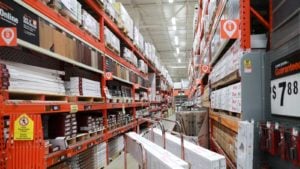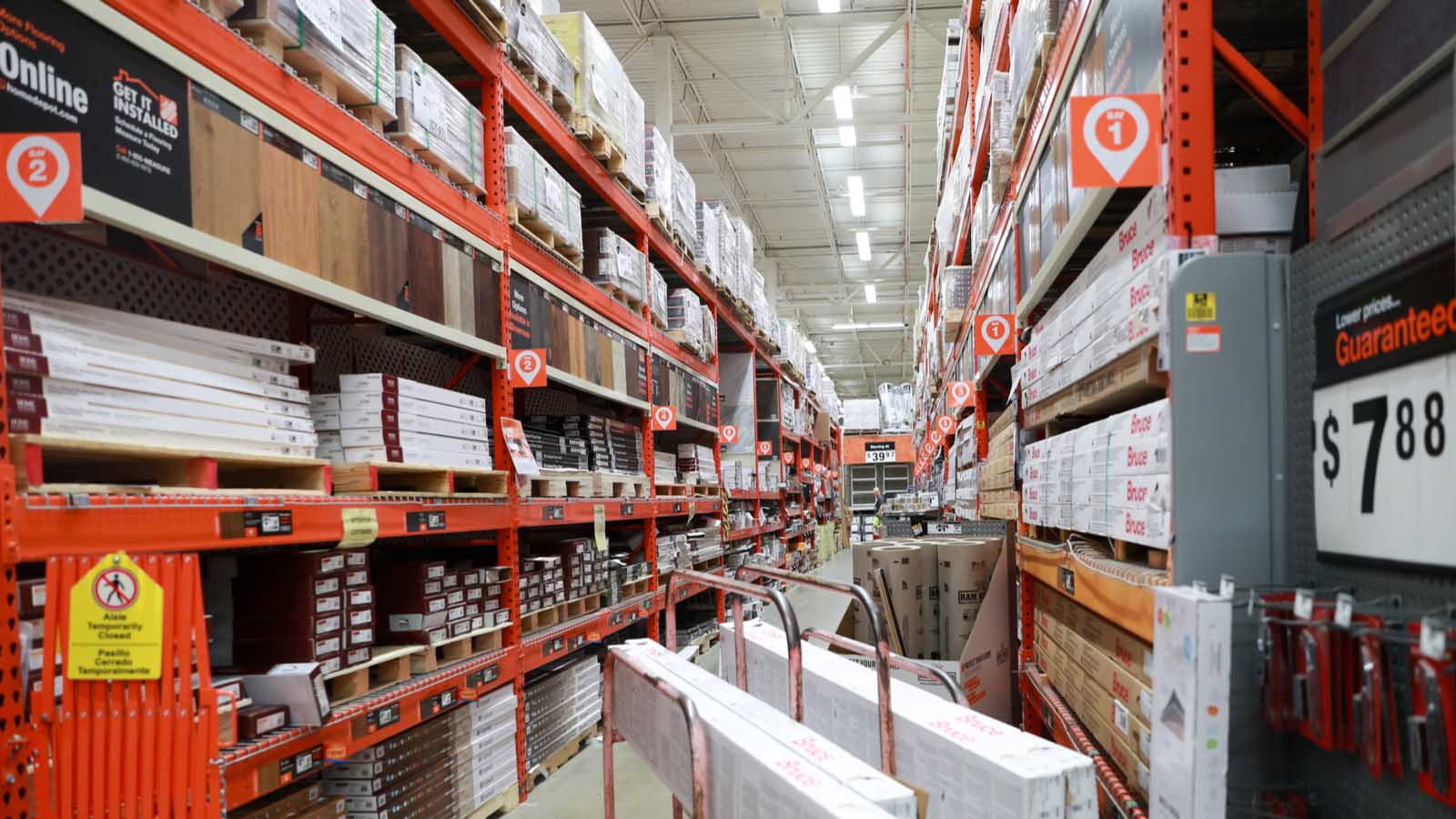A lot of investors who like to “buy the dip” are plunging into Home Depot (NYSE:HD) stock for Christmas.

But while the shares of the home supply warehouse are down almost 10% from a month ago — and HD stock was the worst performer in the Dow Jones Industrial Average during that time — they are still not cheap.
Home Depot opened for trade Dec. 17 at $214.43 per share, selling at nearly 21.5 times trailing earnings. That’s close to the average S&P 500 stock. The only thing “bargain” is the dividend, a quarterly payout of $1.36 per share currently yielding 2.5%. The market capitalization of $235 billion is more than twice its annual sales, high for a retailer.
Why Buy?
Investors with a long-term time horizon are betting on Home Depot for the same reason people root for the New England Patriots — its track record.
Since the Patriots’ first Super Bowl win in 2001, Home Depot shares are up 215%, the dividend skyrocketing from 4 cents per share to its present level. Today’s dividend represents a 13% yield against that 2001 stock price. It’s the very definition of a solid long-term investment.
The company should be good for that dividend, too. Over the last year Home Depot has delivered earnings of $10.04 per share, against an annual dividend of $5.44. Even its “disappointing” third-quarter report, released Nov. 19, showed earnings of $2.9 billion, or $2.51 per fully diluted share, and revenue of $27.2 billion, up 3.5% from a year ago.
The numbers missed Wall Street expectations and the traders sold, leaving room for investors.
Why Not Buy?
The bearish pronouncements are coming from inside the Home Depot house. It said that major investments in its online operations will pressure margins next year, and that earnings may fall below Wall Street forecasts as a result.
Home Depot began its online overhaul, dubbed “One Home Depot,” back in 2017. It’s an $11 billion program, and investment should peak in 2020. The company is putting lockers in its stores so shoppers can pick up online orders. It’s cutting delivery times and improving the website.
Home Depot management isn’t used to making excuses, so some landed with a thud. The company blamed the opioid crisis for creating shrinkage and raising retail theft in a conference call. CEO Craig Menear only said managers think that the crisis may be behind some thefts, and and that his team wasn’t positive about the source of the crimes. Still, tweeters will tweet.
His other “excuse” — improvements at rival Lowe’s (NYSE:LOW) — was more reasonable. Over the last month Lowe’s is up 4.4%, against Home Depot’s loss, thanks to earnings of $1 billion, or $1.36 per fully diluted share, on revenue of $17.4 billion. CEO Marvin Ellison, who joined from J. C. Penney (NYSE:JCP) but who had previously been with Home Depot, is having a moment, winning praise for listening to employees and turning things around.
That doesn’t make Lowe’s the better buy. Lowe’s presently sports a trailing price-to-earnings ratio of 32.3 and its dividend yields just 1.8%. The only way it’s cheaper is based on sales, $71 billion of revenue supporting a market cap of $92.6 billion. Home Depot’s $235 billion market cap is supported by $110 billion of sales.
The Bottom Line on Home Depot Stock
For investors there are horses for courses. Home Depot is the kind of stock you buy once and you put away, confident in the dividend and the company’s long-term prospects.
That’s why, over the last five trading days, Home Depot has recovered its footing. The shares offer a reasonable yield and housing remains strong. The company has few worries from Amazon (NASDAQ:AMZN) because its niche lends itself to in-store pick-up rather than delivery.
It’s reasonable to buy this dip.
Dana Blankenhorn is a financial and technology journalist. His latest book is Technology’s Big Bang: Yesterday, Today and Tomorrow with Moore’s Law, essays on technology available at the Amazon Kindle store. Write him at danablankenhorn@gmail.com or follow him on Twitter at @danablankenhorn. As of this writing he owned shares in AMZN.
